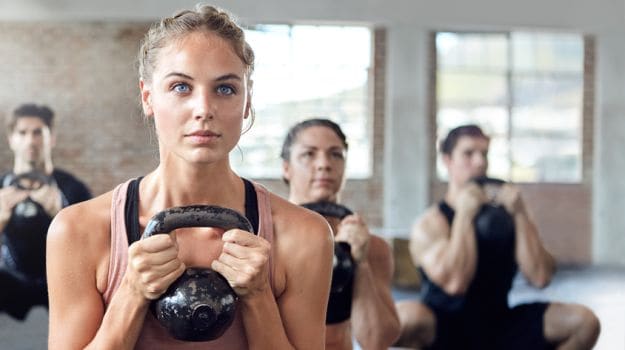
Dr.. Zachary Zenko of the Center for Advanced Hindsight at Duke is on a mission to get people to exercise. He shared this mission and his research aimed at achieving this mission at Duke’s Exercise and the Brain Symposium on December 1st.
Dr.. Zenko started out with a revealing statistic: Only one in 10 people meet the United States activity guidelines for exercise. While I wasn’t completely shocked at this fact as the U.S. is known for its high rates of obesity and easy access to fast-food, I was definitely eager to learn more about how Dr.. Zenko planned to fight this daunting statistic.
Next, Dr.. Zenko pointed out a common assumption in exercise psychology: if people know how good exercise is for them, they will exercise. However, this hasn’t proven to be true. Most people already know that they should be exercising, but don’t. And those that do often quickly drop out.
Then Dr.. Zenko began to break down Dual-Process Theory in Behavioral Economics. Type 1 Processes are those that are fast and non-conscious, while type 2 Processes are those that are controlled and conscious. While research on exercise usually focuses on type 2 processes, Zenko believes that we must focus on both.
Ideally, exercise would involve the affect heuristic, which is a mental shortcut in which an emotional response drives an individual. This heuristic involves type 1 processes. Dr.. Zenko’s goal was to shift away from only considering type 2 processes, and instead focus on using type 1 processes to make exercise more appealing.
How did he propose doing this? By continually decreasing the difficulty of exercise. By changing the slope of the intensity of a workout and having a continually declining heart rate, exercisers could have a more pleasant experience. In addition, this positive experience could influence memory and make an individual more likely to exercise in the future.
Dr.. Zenko put this hypothesis to the test by having unfit adults exercise while continually decreasing the intensity throughout the workout. While test subjects exercised, he measured the amount of pleasure experienced by asking “How do you feel right now?” at certain intervals. This new exercise method has the most potential when starting at the highest intensity levels because it leaves more room to change the slope of the workout intensity throughout, leading to an overall more pleasurable workout.
Looking forward, this new method of exercise could possibly change the way we think about exercise. It may not only involve doing the right amount of exercise, but also doing the right kind of exercise that leaves us more likely to exercise in the future. Considering that traditional methods of promoting exercise, such as educating people about its benefits, have not been particularly successful thus far, Dr.. Zenko’s method is very exciting.
Dr.. Zenko wrapped up his talk by suggesting that people consider exercise prescriptions that are safe, effective, pleasant and enjoyable. As exercise has become a huge part of my weekly routine throughout college, I will definitely take this advice to heart. Maybe even look out for me lowering my intensity during a workout soon in a gym near you?
[“Source-ndtv”]



















